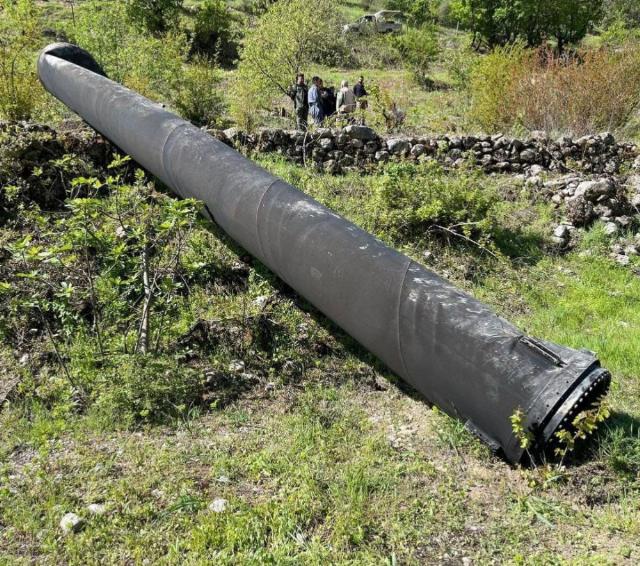The original was taken from a colleague of imp_navigator in Operation "True Promise"
On the night of April 13-14, Iran struck Israel in response to the Israeli strike on April 1 on the consular section of the Iranian Embassy in Syria. The military operation was called the "True Promise" and, as Iran emphasizes, was carried out in accordance with Article 51 of the UN Charter, which grants the right to self-defense in the event of an armed attack.
It was clear from the very beginning that Iran would be forced to do something like this. As I noted immediately after the Israeli strike in early April, although the Iranian strategy requires avoiding being drawn into an open war against Israel and the United States, but if Israeli strikes on Iranian military advisers are simply somewhere in Syria or even sabotage and killings on the territory of Iran itself were understood by everyone as part of the ongoing many years between Iran And if there was a secret war of the special services, then a direct military strike on the Iranian diplomatic mission went beyond all this and seemed to be an attempt to change the established unspoken rules. Israel's actions required some kind of direct adequate military response from Iran, otherwise it would have been perceived by everyone as an extreme weakness of the Iranian leadership in front of both enemies and allies and its own population.
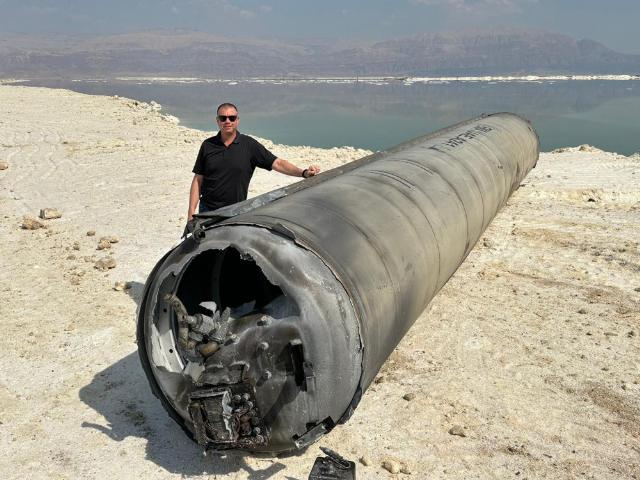
Thus, Iran had to try to restore the faltering deterrence, but at the same time try to prevent the situation from escalating into a major war simultaneously with Israel and the United States. The most symmetrical Iranian response could look like a strike on some Israeli embassy or consulate, but this threatened to seriously worsen relations with the countries in which these Israeli diplomatic missions are located, as well as their allies. All these considerations determined the scale and objectives of the Iranian operation "True Promise", forcing it into a very strict framework. That is, a direct strike should have been inflicted on individual military targets in Israel, at the same time massive enough to take into account the need to break through the modern layered Israeli air defense and missile defense system and at the same time strictly limited in order to minimize the threat of collateral civilian casualties and try to avoid the situation spiraling into uncontrolled escalation. So, the head of the General Staff of the Iranian Armed Forces, General Mohammad Bagheri, said that the main targets of the attack were the Israeli intelligence center near Syria and the Izrial Nevatim Air Force base in the south of the country, aircraft from which, according to Iranian data, participated in the strike on the Iranian diplomatic mission in Damascus on April 1. It is possible that another target was the Ramon air base, also in the south in the Negev Desert. The outfit of the forces should have been isolated from the approximate calculations of what the Iranian military considered to be the minimum sufficient to penetrate the Israeli air defense system. At the same time, it should be understood that all these calculations were purely theoretical in nature, and no one in the world had any experience of delivering such a blow.
The Iranian operation was the first massive use of medium-range ballistic missiles in armed conflicts and the same first massive use of missile defense systems to defeat them. That is, there have already been isolated cases of both, for example, in January 2022, the THAAD missile defense system in the UAE shot down a medium-range ballistic missile launched by the Houthis from Yemen. In recent months, there have also been cases of interception of single missile launchers launched from Yemen and Israeli air defense systems of the Hetz family, but all these were precisely isolated single cases. No one has ever carried out such massive strikes, but no one has ever had to overcome such an intense missile defense.
Iran informed neighboring countries about its upcoming attack on Israel three days before it began. To carry out the combined attack, the bases of the Aerospace Forces of the Islamic Revolutionary Guard Corps of Iran in the western and central parts of the country - the provinces of Kermanshah, Khuzestan, East Azerbaijan, Isfahan, Fars, Tehran and possibly others were involved. Some of the missiles and drones were launched by Iranian allies - Shiite militias from Iraq and the Ansar Allah government (Houthis) from Yemen (according to American data, there were also launches from Syria, but most likely it was the Iraqi militia units stationed there), but most of the missiles and drones were launched from Iran itself. At the same time, it is significant that there were no strikes deep into Israel by the armed wing of the Lebanese Hezbollah, which that night only fired at Israeli positions in the occupied Golan Heights from MLRS, which has been common there in recent months.Hezbollah continues to adhere to a strategy of limited military operations with Israel in the border areas and Iran does not see the need to change this yet.
The attack began with the launch of kamikaze drones "Shahed-136" (Shahed-136), which take the longest time to fly to Israel. They were launched in two or three waves from at least Kermanshah and Khuzestan.After a while, Paveh cruise missiles were launched in pursuit of them in the most budget version. The last medium-range ballistic missiles were launched. On the videos of launches published by Iran and on the fallen spent missile parts, it is possible to identify the Imad, the Ghadr family (apparently with a cassette warhead), Khaybar Shekan and possibly Dezful and Rezvan. In general, it is also a very budget set of missiles. Moreover, all these drones, cruise and ballistic missiles have already been shipped abroad or are offered for export, that is, Iran does not seem to want to reveal the capabilities of its most powerful and best missiles.
There is no data from the Iranian side on the scale of the strike now, as for estimates on the other hand, the representative of the Israeli army, Rear Admiral Daniel Hagari, said that according to their data, about 170 drones, more than 30 cruise missiles and more than 120 ballistic missiles were launched, in turn, according to American estimates, more than 100 ballistic missiles were used medium range, more than 30 cruise missiles and 151 drones. As expected, the Americans began to work on drones and cruise missiles over Iraq, both with the help of their Air Force and with the help of anti-aircraft complexes stationed at their military bases in Iraq. Then the Air Forces of Jordan, France and the United Kingdom joined the interceptions over the territory of Syria and Jordan. The United States claims to have shot down more than 80 drones, Reuters sources report that the Jordanian Air Force also shot down dozens of drones, the United Kingdom and France also report that their Air Force shot down drones and cruise missiles. Naturally, Israeli Air Force fighters flying out of the country also participated in the interception.
A layered missile defense system worked on ballistic missiles and drones that broke through closer to Israel \ cruise missiles\Israel's air defense system, which is one of the densest and most modern in the world. So its upper level against the BRSD is formed by the Hets family of air defense systems (Arrow), and the David's Sling, Patriot and Iron Dome air defense systems can work against the BRMD, OTRK, drones and cruise missiles. US Navy ships also assisted her at sea, as the Americans claim the destruction of six ballistic missiles by their own forces, including one in Yemen. Nevertheless, some ballistic missiles broke through. The presence of hits on the Nevatim base is also recognized in Israel, but they say that the damage was limited and insignificant. In turn, ABC News, citing a senior American official, reports that 9 Iranian missiles broke through the missile defense system\Air defenses hit two Israeli air bases. Five missiles hit the Nevatim airbase, damaging the C-130 military transport aircraft, the runway and storage facilities, and four more hit the Negev airbase (it must be the Ramon base that was called that), but there were no reports of significant damage from there. In a good way, good satellite images are needed for some more or less realistic assessment, although damage from, for example, submunitions of a missile with a cluster warhead and the impact of fragments, even on satellite images, may not be so easy to identify.
In general, from a political point of view, Iran has now shown its readiness to reinforce the deterrence system with direct force, and has scored a lot of propaganda points against the background of the war in the Gaza Strip. Moreover, IRGC Commander-in-Chief General Salami stated that they have now decided to create a new equation in relations with Israel and will be responsible directly from Iran for every attack against Iranian citizens, interests, etc. Well, let's see, as they say. Let's also look at the further actions of Israel, will the Israeli authorities further escalate the conflict and strike at any facility on the territory of Iran, despite the fact that the United States does not advise them to do this or not? Iran is now preparing for both scenarios, threatening to deliver much more powerful strikes in the event of an attack from Israel. In principle, Iran has plenty of different missiles and drones for this, but we must not forget about the power of the Israeli Air Force (and Israeli missiles) in the event of an exchange of strikes.
From a military point of view, both sides have gained experience that is simply impossible to get otherwise. Iran conducted reconnaissance in combat and looked at what they could really do to repel a combined air defense attack\Missile defense and the Israeli Air Force are operating at maximum and with direct military assistance from the forces of the United States, Great Britain, France, and neighboring Jordan stationed in the region. This is invaluable information when planning any future operations, as it will allow you to make calculations of the order of the necessary forces to break through the Israeli air defense and missile defense already based on real data. In turn, Israel was able to fully verify the operability of its missile defense systems and the interaction of all Air Force and air defense forces, and now it can also rely on practical data on this issue, even if Iran did not strike at the maximum possible. All this is also priceless.
By the way, a rather funny fact, as I understand it, Iran became the first country to strike the territory of two countries with nuclear weapons at once in three months - on the territory of Pakistan in mid-January and now on the territory of Israel :)
The launch of missiles from the area near the Iranian Tabriz .
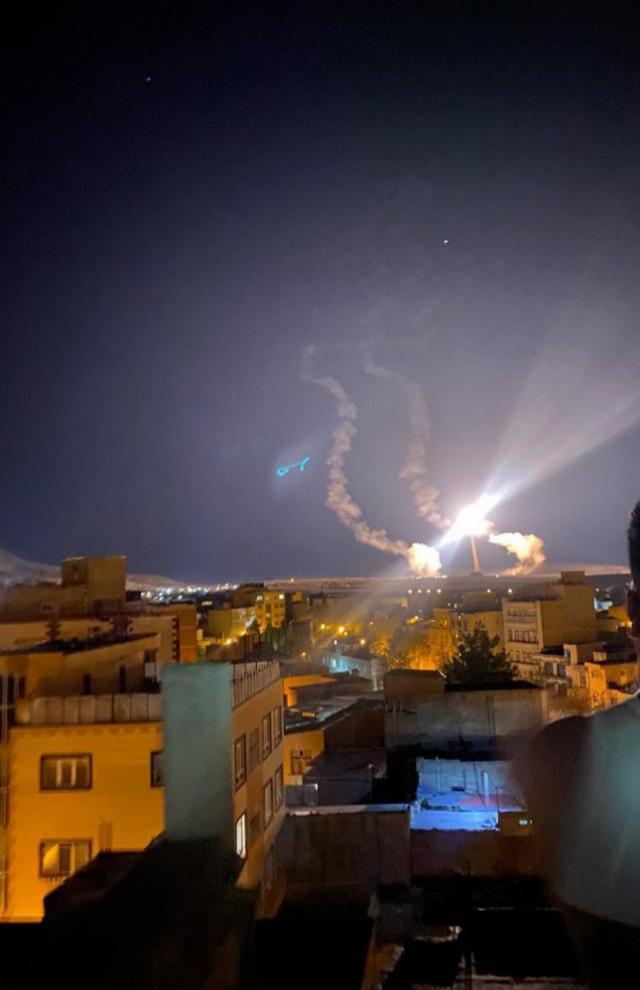
Video of ballistic missile launches from Iran
Some videos from Iranians from different cities
BRSD "Imad" (Emad)
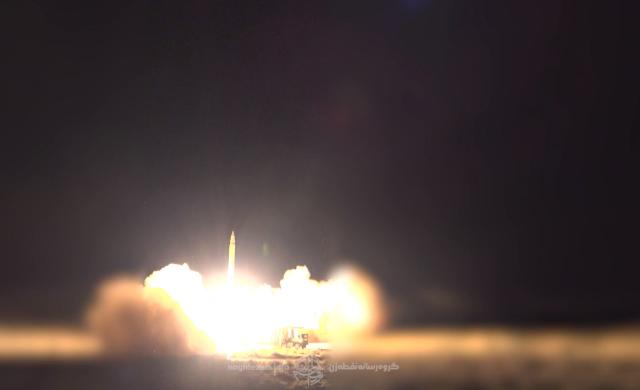
BRSD "Ghadr" (Ghadr)
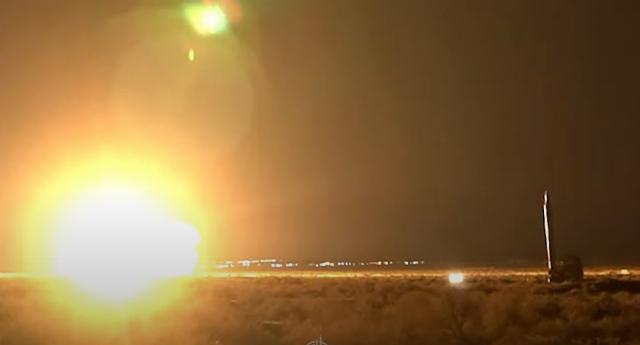
BRSD "Khaybar Shekan" (Khaybar Shekan)
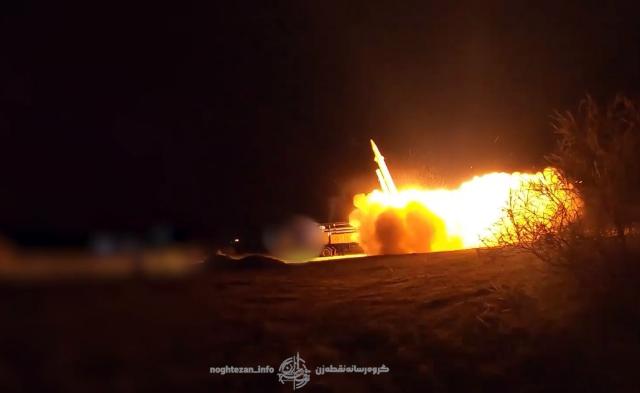
Video of launches of Paveh family cruise missiles As you can see, the most budget-friendly and simple version of these missiles (with a non-folding wing) was used, which the Iranians supply disassembled to the Houthis in Yemen (where they are called Quds).

Video of the launches of kamikaze drones "Shahed-136" (Shahed-136) and the flight of the low-flying "Shahed-136" in Iranian Khuzestan
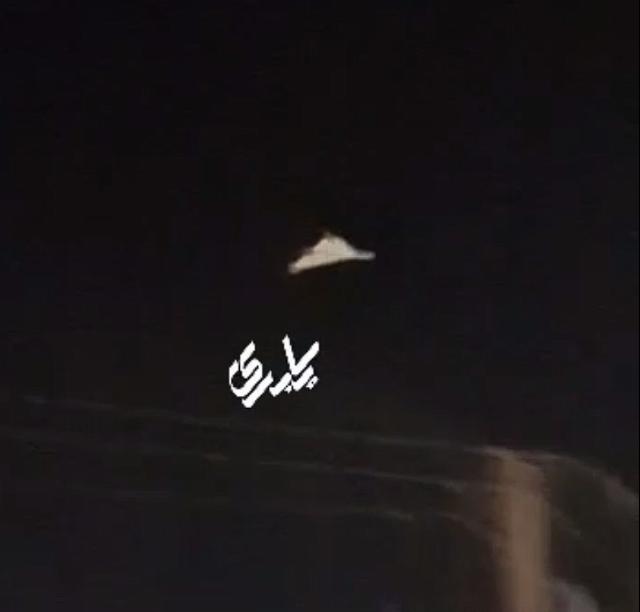
A swarm of drones defiantly flew with lights on over the Shiite holy city of Karbala in Iraq
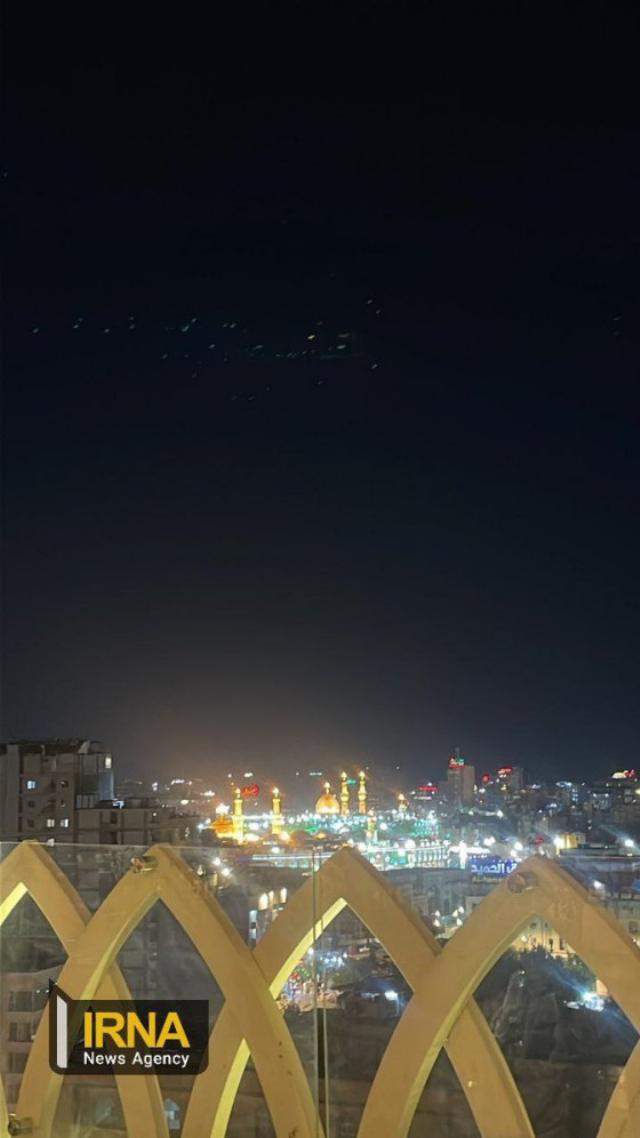
Video of the defeat of Iranian drones and cruise missiles by Israeli Air Force fighters using guided air-to-air missiles.
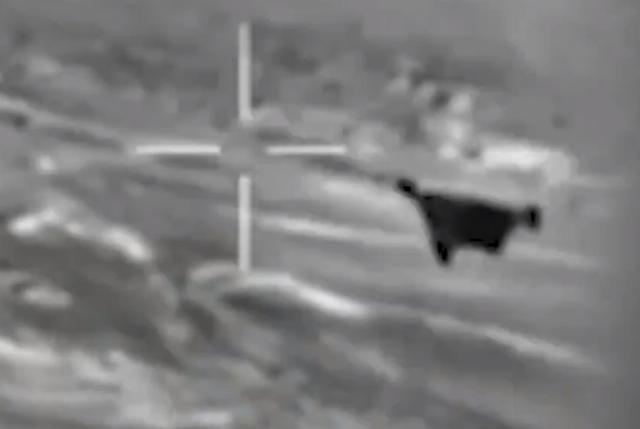
Some of the spent missile parts that fell along the way after the fuel was all used and the head of the BRSD separated from them and flew to the target. There are a lot of photos with them on the Internet, they are mistakenly mistaken as debris from downed missiles, although the fall of such parts is just a consequence of the regular operation of ballistic missile systems.
